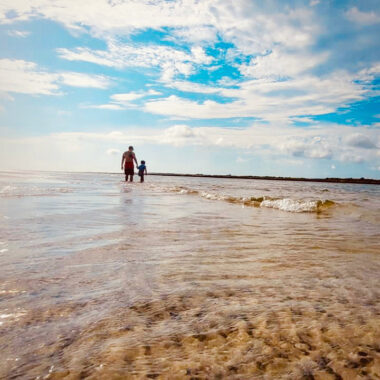Saving for future care, that foggy path just over the hill
Long-term AADC deficiency care is expensive, so having a plan is crucial

Meeting another father whose daughter has a rare disease always prompts a free-flowing and earnest discussion. When it happens, I don’t refrain from opening up.
I had an eye-opening experience during a recent meeting with a father with over 25 years of experience in the world of rare diseases. The conversation that still haunts him is the one I have been avoiding.
Earlier this year, our family traveled for a physical therapy vacation. This time, my wife, Judy, and I decided to have our summer travel plans incorporate visits with other families in the aromatic l-amino acid decarboxylase (AADC) deficiency and broader rare disease communities. One of the first things we learned when we discovered our daughter, Rylae-Ann, had AADC deficiency was that the disease was far from common and that others were scattered worldwide.
Although the internet helps us all stay connected, we are all still very much like islands in the sea, doing our best to care for our children. That’s why we wanted to use our holiday to meet other families. It’s a gift to physically connect with another parent and have our children meet each other.
Discussions of an uncertain future
The father I met, Bruce Heger, is a founding member of the AADC Family Network. He learned that his daughter, Jillian, had AADC deficiency over 27 years ago. At the time, AADC deficiency had just been identified, and Jillian was among the first to be diagnosed. Today, Jillian is 27 years old, and her father still has a similar concern that he did when she was diagnosed at 5 months old.
During our conversation, Bruce mentioned how he worries about his daughter’s life and well-being after he and his wife are gone. I had similar thoughts when Rylae-Ann was diagnosed, but I suppressed the concerns to deal with them another day. I incorrectly decided to focus only on the here and now.
The forethought of your child’s life after you are gone is not unique to rare disease parents. However, the options and process are not as clear as they are for parents with typical children. Few have gone on this journey that my wife and I are now on, and the information we have found so far is limited. The experts are other parents like Bruce.
Judy and I both work full-time jobs and have flexible part-time jobs. The majority of our paycheck is dedicated to making memories here and now. We put some aside for long-term savings with Rylae-Ann’s name as the beneficiary. I do not regret for a moment the decision to focus more on today. Unfortunately, this is not sustainable, and the reality I learned was that our financial plan would be nowhere near enough.

Rylae-Ann and her father walk on the beach during low tide, making memories in the here and now. (Courtesy of Richard E. Poulin III)
The cost of raising a child with a rare disease
Raising an AADC deficiency child should be one of the most expensive due to the debilitating symptoms that leave children entirely dependent. The National Survey of Children with Special Health Care Needs reported that cerebral palsy, a condition AADC deficiency is often mistaken for, requires an average of 14.4 hours of at-home care per week. Before Rylae-Ann had gene therapy, Judy and I could only care for her by creating a support network.
Those hours of care cost money and take away from potential earnings. Without a parent, Rylae-Ann would require a personal caregiver or institutional care. This doesn’t factor in therapy, medical care, and much more. I shudder to think of not being in my daughter’s life to help her, but it cannot be ignored. I pray for my daughter to have a long and happy life, which may require support after Judy and I are gone.
The advocacy group Autism Speaks estimated that the lifetime cost for a person with autism is between a staggering $1.4 million and $2.4 million. Again, the lifetime cost of AADC deficiency should be similar, if not more. Starting a piggy bank fund or saving extra cash from a part-time job is an insufficient savings plan.
I still have a lot of homework and financial planning to do. Thankfully, by tapping into the wisdom of a father who has traveled this journey for much longer, I feel confident to face this challenge head-on. The road that lies over the hill is still foggy but no less brighter than what it is now.
Note: AADC News is strictly a news and information website about the disease. It does not provide medical advice, diagnosis, or treatment. This content is not intended to be a substitute for professional medical advice, diagnosis, or treatment. Always seek the advice of your physician or other qualified health provider with any questions you may have regarding a medical condition. Never disregard professional medical advice or delay in seeking it because of something you have read on this website. The opinions expressed in this column are not those of AADC News or its parent company, Bionews, and are intended to spark discussion about issues pertaining to aromatic l-amino acid decarboxylase deficiency.








Leave a comment
Fill in the required fields to post. Your email address will not be published.